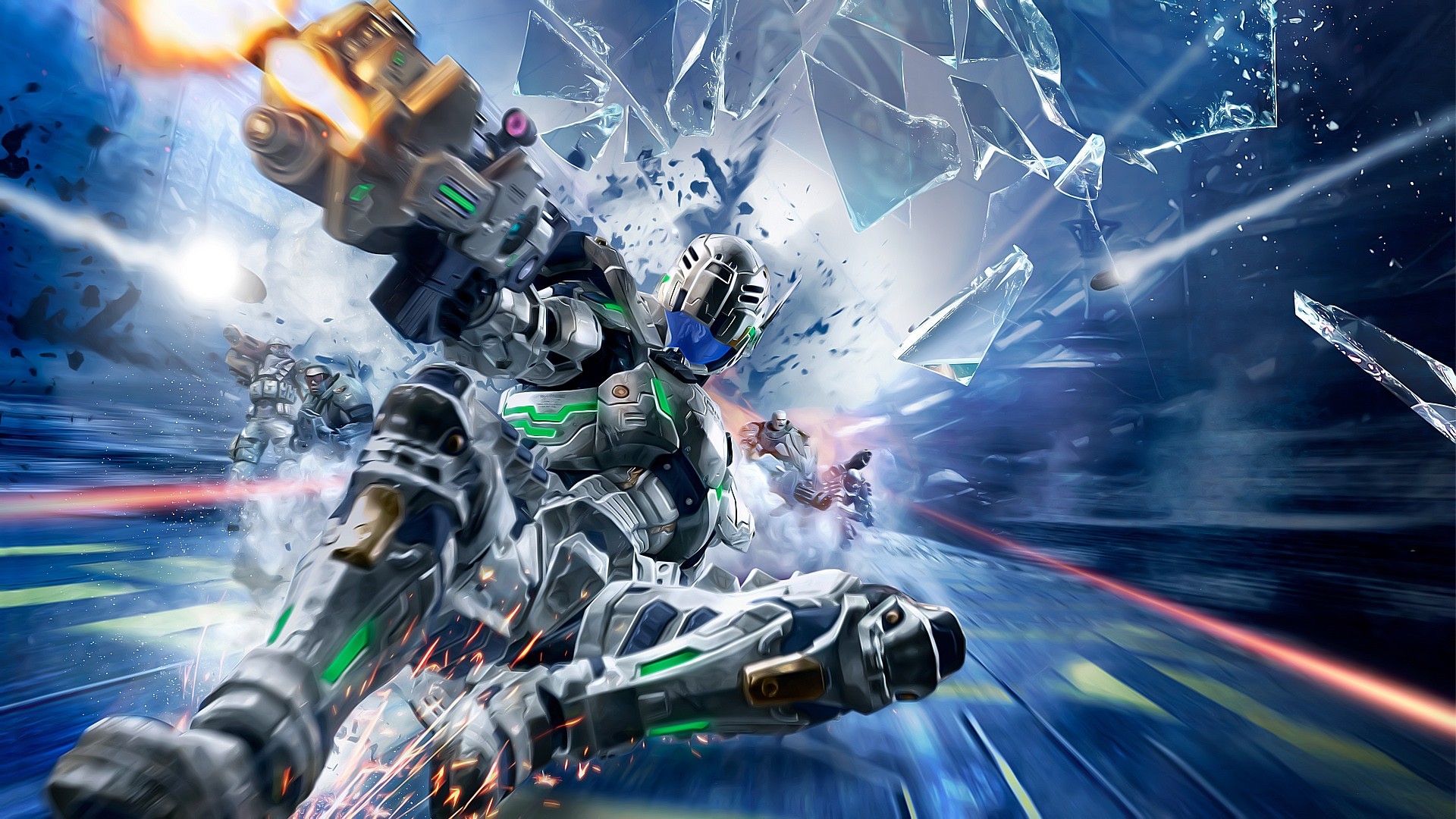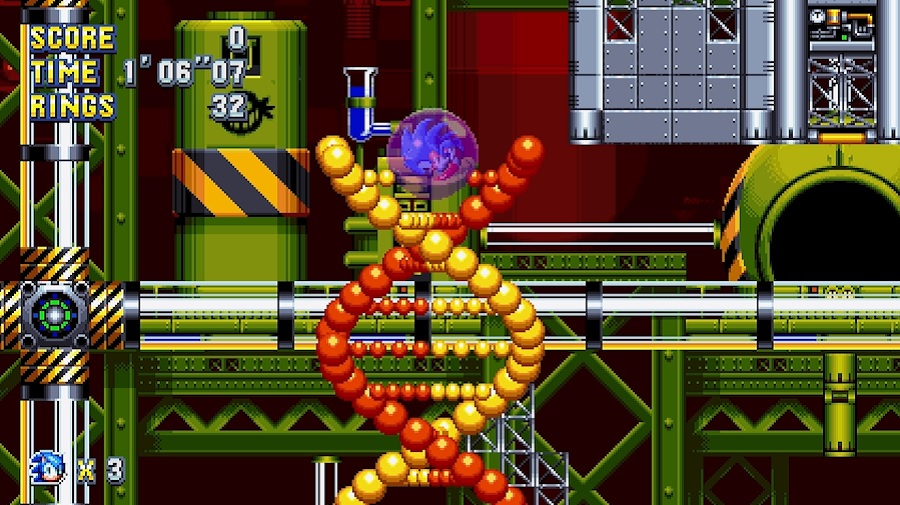Sega may be in the best shape it’s ever been since when it ruled the game industry in the mid ’90s.
That was back when Sega was a first-party developer with its Genesis console. A series of failed systems forced the company to move to third-party in the early 2000s. It was a tough transition, but it’s clear when visiting Sega’s booth at the Electronic Entertainment Expo in Los Angeles that the company has found a new identity.
And that identify doesn’t hinge on a singly platform or franchise. Sure, two new Sonic games — the retro Sonic Mania and modern Sonic Forces — are attracting lines at the E3 booth. But Sega has also positioned itself as a big player in PC gaming. It’s showing off the strategy game Total War: Warhammer II at the show, and it has recently released Endless Space 2 and some of its older games like Bayonetta and Vanquish on the Steam digital store. And then Sega has Atlus, the role-playing game studio responsible for hit franchises like Persona and Etrian Odyssey.
I interviewed Sega of Europe vice president John Clark at E3. I asked how Sega found its new identity, its dueling Sonic games, and the revitalization of its classic franchises.
June 5th: The AI Audit in NYC
Join us next week in NYC to engage with top executive leaders, delving into strategies for auditing AI models to ensure fairness, optimal performance, and ethical compliance across diverse organizations. Secure your attendance for this exclusive invite-only event.

Above: Sonic has to save a burning city in Sonic Forces.
GamesBeat: Sega seems to be doing a lot of interesting things now — on PC, on Switch, and on mobile. Where do you see the future of Sega?
John Clark: We go back to the thing that drives us, the mission of the organization, is “Creativity is life.” That filters down. The team we work with, we support that vision, but also bringing entertainment to many people. We think about it as one community at a time. We’re not just about one genre of gaming, gaming that is specifically Japanese or western or on PC or on any platform. So where do we see ourselves? We love video games. We see ourselves as having as a responsibility for Sega to keep bringing video game experiences to communities.
As one-dimensional as that may sound, I think it’s not more complicated than that. We’re all passionate about what we do. We’re all passionate about games. Imagine standing in the middle of the Sega portfolio of games, just walking around and looking at it. The vast choice you’d find is incredibly rewarding to be part of.
GamesBeat: This push toward PC is interesting. You have new games like Creative Assembly’s Total War: Warhammer II, but you’ve also been bringing older games like Vanquish and Bayonetta to PC.
Clark: Creative Assembly has been there for 30 years. Sega acquired Creative Assembly in 2005. One area that makes them such a strong developer is their creative vision, their connection to their community, and their desire to keep delivering quality experiences. I’ve been at Sega for just over 10 years now. To be able to work with a studio like Creative Assembly, we see a lot of the things that drive them, and it influences us. We see a strong core community. We see a strong attention to quality, creative content. From that, we see success. We see a happy community. We see more content being delivered. That’s fantastic.
Along the way, we’ve understood how best to work with a community through Steam. Steam has been a growing platform for many years. Back when Steam opened up to become a multi-publisher platform, we were one of the first to sign up with them. Medieval: Total War II was probably one of the first third-party games to launch on Steam. From there we take it very seriously. We take feedback from the community. We see the audience building on Steam. Ultimately that drives us, across the rest of our business, to think about community, connection if you like, the connection from the creator the community.

Above: The Lizardmen aren’t happy in Total War II: Warhammer.
When we look at games like Vanquish and Bayonetta, again, it’s quite simple for us. At Sega we’re all fans of Sega games. We loved Bayonetta when we released that on the console so many years ago. We were proud to be in a partnership with Platinum Games. We see the vibrancy of Steam. We should make sure these games are available for people to play on Steam. We think about the community that joins Vanquish, for example. The people who play Total War, they’re different, but they’re connected by their expectation for excellence and their passion within that. When we look at Vanquish and Bayonetta in particular, bringing those out on Steam — we think about how we bring those on Steam. We know we have quality games. That’s evident. We knew that when we released them many years ago with Platinum Games.
To make sure we connect with the community means it has to be the right sort of conversion. Framerate is important, 60 frames per second. Alignment with graphics cards is important. The features that we have as far as Steam achievements are important. The fact that you can use a mouse and keyboard and configure the keyboard is very important. You’ll see that a lot of the feedback we get on Steam is not just about, “Thanks for bringing Bayonetta.” It’s, “Thanks for bringing Bayonetta like this.” That’s valuable because, one, it’s a good way of playing the game. The community demands that we consider the community closely. That resonates across the rest of our business.
GamesBeat: Sega didn’t just release those older games on Steam. You had the countdown clocks and the hidden images for Vanquish inside Bayonetta. Why do approach these releases this way?
Clark: Community is important to us. We consider where the strongest community message comes from. Is it from the press, or is it from the community itself? Is it from the creator? Is it through discovery? With digital platforms, whether it’s content delivery or message delivery, we find ourselves learning more about our community through how we experiment and innovate with those messages. Bayonetta was being driven by a series of people who are passionate about Platinum Games, passionate about Bayonetta, passionate about having fun and creating strong demand in the community. We teased the release for Bayonetta on April 1 by launching the 8-bit Bayonetta game. Within that game there were achievements. Achievements led to finding the hidden message and images.
From that, we saw incredible community activation in terms of the message. It was obvious what was going to happen next, but we enjoyed the engagement with the community. It teaches us a lot more about the community and ways of reaching out to them. That subsequently led to us messaging Vanquish through Bayonetta, through dropping Vanquish content into the game. Again, it’s all about community. It’s all around building that value.
At the end of it, when Vanquish was released — we did put out a press release and pre-orders and everything else, a little more traditional. But we established a stronger bond with that community then we would have done if we’d approached it in a purely traditional sense. From that, that makes us think a lot more about understanding the community a bit better. That will influence our decisions elsewhere. It may not be in the IP we bring to Steam like that, but it could be in the way we communicate on a different game in a different way.

Above: Vanquish wants to slide into your Steam library.
GamesBeat: Can people expect to see more classic games like that appearing on Steam?
Clark: Yes, you should expect that. It’s something we want to make happen, something we’re actively working on. Prior to Bayonetta and Vanquish we launched Valkyria Chronicles a couple of years ago. That was great for us. We loved bringing that game out. Before that we had fun bringing out Typing of the Dead. With that, we put out Steam Workshop dictionaries, where people could bring in their own words. We’ve had Mega Drive and Genesis games on Steam. We’ve recently thought about the menu system and front end. We’ve created a Sega gaming lounge, or gaming bedroom if you will, to aid discovery of that. There’s more to add on that front. We’re working on enhancements. We’re working on more content as well to bring to Steam.
GamesBeat: The company has mentioned that it was wants to leverage some of its older IP. Why is that important for Sega?
Clark: If ever you talk to anybody about Sega, they’ll tell you what they remember, their favorite memories. That’s incredibly valuable. We cherish that. We have those memories ourselves. People will say, “My first memory of Sega is this.” “My first console was the Genesis.” What’s important is the value and loyalty from those consumers. We want to make sure we continue to deliver against that. When we see the way the games business has gone, with the transitions and transformations over the last few years, we’re able to have those conversations with users and the community in a way we couldn’t have before.
We have a bunch of Sega fans working at Sega. They all want to see those games. It would be great if you could play Golden Axe or Streets of Rage. We just try and figure out the best way of making that happen. It could be by just making these games available through an emulator on Steam or PlayStation, or it could be through doing what we’ve recently done with Yakuza, doing an HD remake. It could be what we’re doing with Bayonetta and Vanquish, making sure we have these best-practice conversions available on Steam. There are many ways for us to approach it.
GamesBeat: Speaking of old and new Sega, you have two Sonic games this year — one modern with Sonic Forces, one throwback with Sonic Mania. Are you worried about those two titles splitting the market?
Clark: It’s like asking, “Will a Sonic fan only buy one Sonic game?” We think they both occupy different audiences. Initially we wanted to appeal to the core fan. We want to deliver a strong experience that’s going to immediately give such strong and instant gratification, if you like, from accessing it. And then we want to appeal to a broader audience, which is where Forces comes into it. But who’d have thought that this retro-looking game, developed by Christian Whitehead and the team he’s put together, a community developer, and then Sonic Team developing Sonic Forces — that, for us, is a real step change. It’s something we wouldn’t have expected to see, say, 10 years ago. That, in itself, was very exciting for us, and hopefully for fans as well.

Above: Sonic Mania’s Chemical Plant level.
GamesBeat: Is there any kind of curiosity within Sega about which of these two is going to do better? Could that affect the direction of the franchise going forward?
Clark: “Better” — it’s an interesting way of looking at it. Consumer feedback is related to that. Is it performing better commercially, or is it performing better with the community and the feedback you get from there? Both are very important, and both will influence our decisions going forward. If we’re in a situation post-release where we can look back and say, “Wow, they both went fantastically and we have lessons from both of them to incorporate going forward,” that would be the ideal situation. That’s one reason we’re moving down that road.
GamesBeat: And then Sega also owns role-playing game master studio Atlus. Persona 5 is a big success story this year. Has Atlus exceeded expectations for Sega?
Clark: Whether we can say it’s overperforming or performing to expectations, we’re really delighted with Persona 5. Everyone across the Sega organization is proud to be able to say that we were part of that, however big or small a part each individual played. Persona 5 is a flagship brand for Sega coming from Atlus now. It’s very strong. We appreciate that. We talked before about the connection with the community, identifying the uniqueness of the community. That’s embodied in the Atlus titles, particularly Persona.
GamesBeat: We hear a lot of buzz today about “games-as-a-service,” but you don’t hear that from Sega much.
Clark: You’re right. The games-as-service banner is something we don’t necessarily fly above everything we do. But it’s still really important, understanding what that means, and certainly what that means to Sega. When you look back through the history of Sega, “Service Games” is where the name comes from.
But to touch on PC again, going back a few years and seeing what made Total War great — it’s that connection with the community, thinking about the individual experience within that game. How do we talk to that player? How do we think about them as a player? How do we not think of them as a commercial unit, but rather someone we hope will have an incredible experience with the content? How do we retain them? How do we keep delivering content and expanding their experience with free content or content they can choose to purchase to prolong their experience or bring them back to the game? That’s something we do and something we have done for a while. We can put the definition of games as a service to that, perhaps. We feel like we were doing that before people came up with the name.

Above: Persona 5 is been a big hit.
GamesBeat: Sega seems like a very “fun” company these days. You have games like Sonic. You have your humorous social media presence, like the Sonic the Hedgehog Twitter account. Is that something that just happens organically or accidentally? Or is something you planned?
Clark: When you embrace and try to understand how we work — digitally, through social media — it’s not just about downloading games through Steam. It’s just as much about how we communicate with the audience. If we go back and look at, traditionally, 10 years ago, how we would communicate externally, what message we would send out from any organization — there was a series of rules and standards we had to follow. The use of social media is handing trust over to really important people that run those accounts. So, first, will I ever, as an executive of the company, understand the best way to use Twitter? No, I won’t. But are there youngsters coming along that are passionate about the content, passionate about the communication channels, who just get it? They get the fans. They get the way to communicate with them. At what point does Sega say, “I trust you”? That’s a key shift for any business, not just a games business.
We have, dotted throughout our business and our infrastructure, key people that are trusted and responsible for communicating with the community through channels, whether it’s Twitter or YouTube or anything else. They drive our message themselves. It’s a vibrant and exciting place to be. Sometimes it’s a good way for senior executives to find out what’s happening and what the message is – finding that out at the same time as the community is a place that I never thought I’d be 10 years ago. Shifting to feel comfortable that, to feel a level of trust in the people projecting that message, is incredibly liberating.
GamesBeat: Comfort is an interesting word. I think back to Sega when it first became a third-party publisher and developer. Sega didn’t seem comfortable in that role for a while. But it now seems like you have found its identity.
Clark: We call it a transition, or I prefer to call it a transformation. It’s not just about going from a one-platform company to a multiplatform company. It’s embracing a franchise- and IP-led business. That’s something we’ve been moving toward over the last five years as well. Within that there have been quite a few transformations. Thinking back on what Sega is, if you aligned Sega with other traditional publishers and content creators – the names that come to the fore within that – ask yourself, how many of those organizations have gone out of their way to transform their business on more than one occasion? That’s something that makes us feel such a level of vibrancy at Sega.
Something makes us all feel we have an influence. We’re important. We have accessibility to our business. We influence the direction of the organization. That’s incredibly important. Going back to the transition, call it learnings, call it pain, call it opportunities — it’s the same with every business. Of course you learn along the way. It’s important how we learn, who we learn with, how we put those lessons to use, who is empowered within the organization. Understanding where the influence lies in the organization. As we sit here now, that’s something that’s much different to five years ago, let alone 10 years ago. It’s a great, rewarding place to be.


